Build Rome
-
@adamb said:
Hey, good start. Hope we can see it as it progresses.
One thing you might want to do is rescale the whole model to actual size. Believe me, it will avoid hassle later.
Its current 46 kilometres long which I think even the Romans would struggle building.

FYI. You can use the tape measure tool by measuring an edge in your model, and then typing in the length you want that edge and SketchUp will prompt you as to whether you wish the whole model scaled.
Thanks, but as a matter of fact the models are in scale, only that it's centimeters ...
-
AdamB is right the man in the model is 171 meters .
Your model is probable scaled up 100x i think.Bep
-
You are right, these were the starting measures. Somewhere along the line I must have done something wrong, and the scale went askew ...
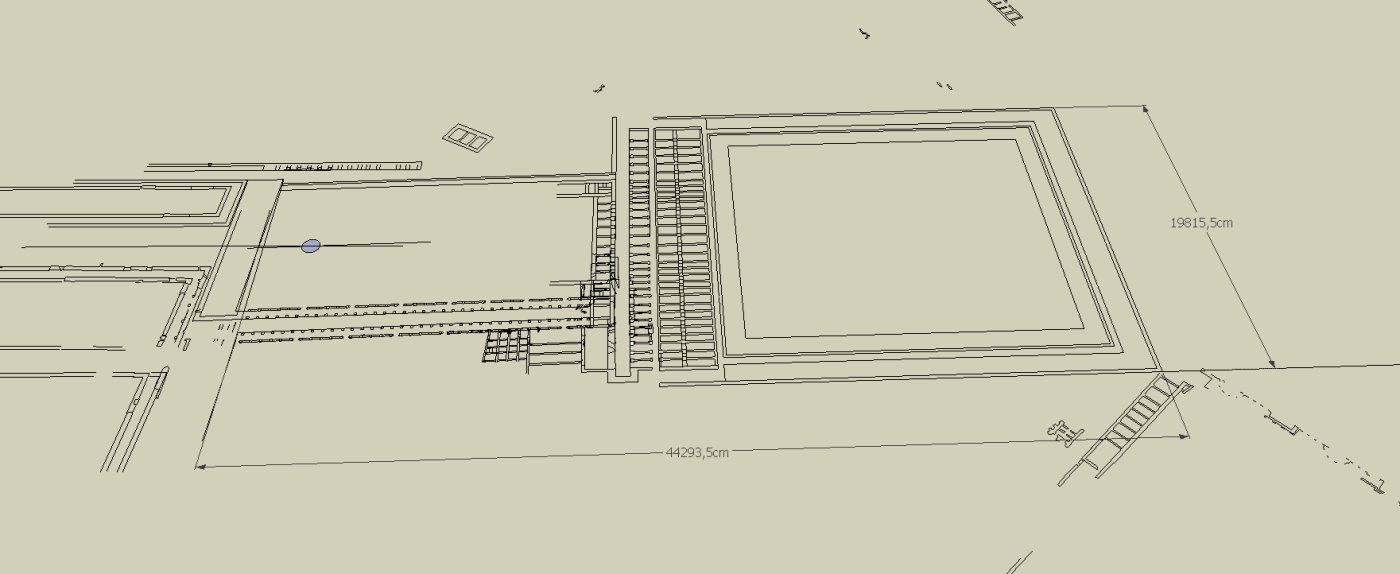
-
-
Ok, I started playing with the wing of the Domus Aurea on the Oppio hill ... I'll need to think it over, it's not easy ... The plan is known, more or less, there might be other bits and pieces.

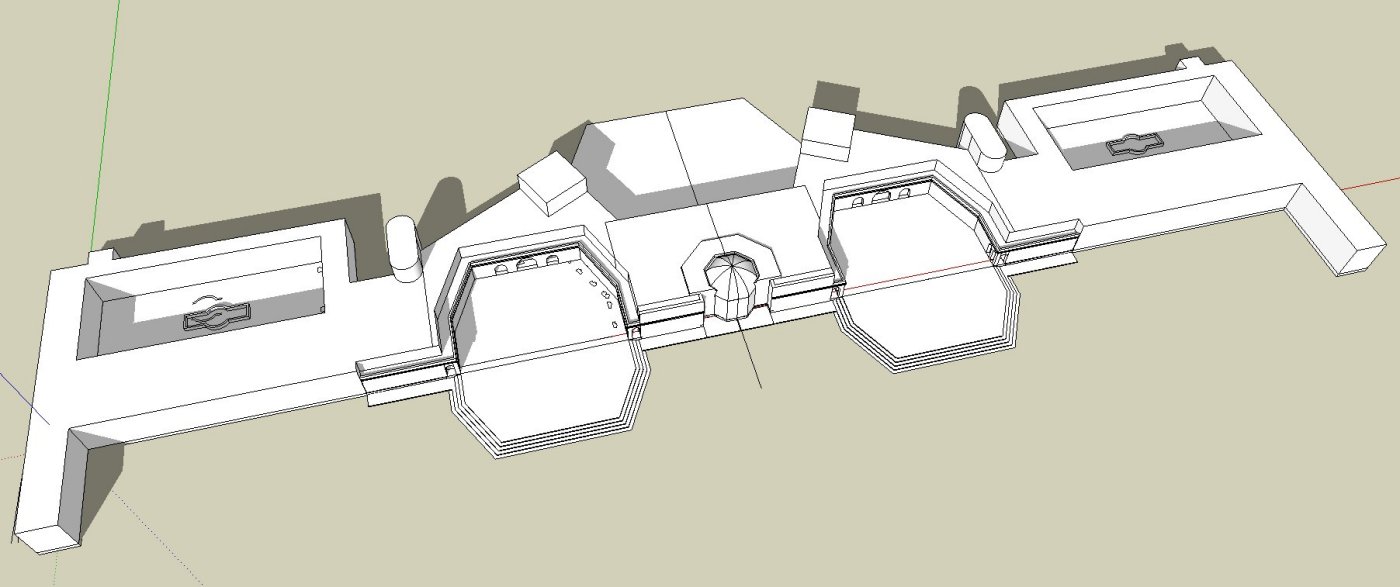
-
Ok, this is what I got now. I took in account most of the archaeological evidence I found ...

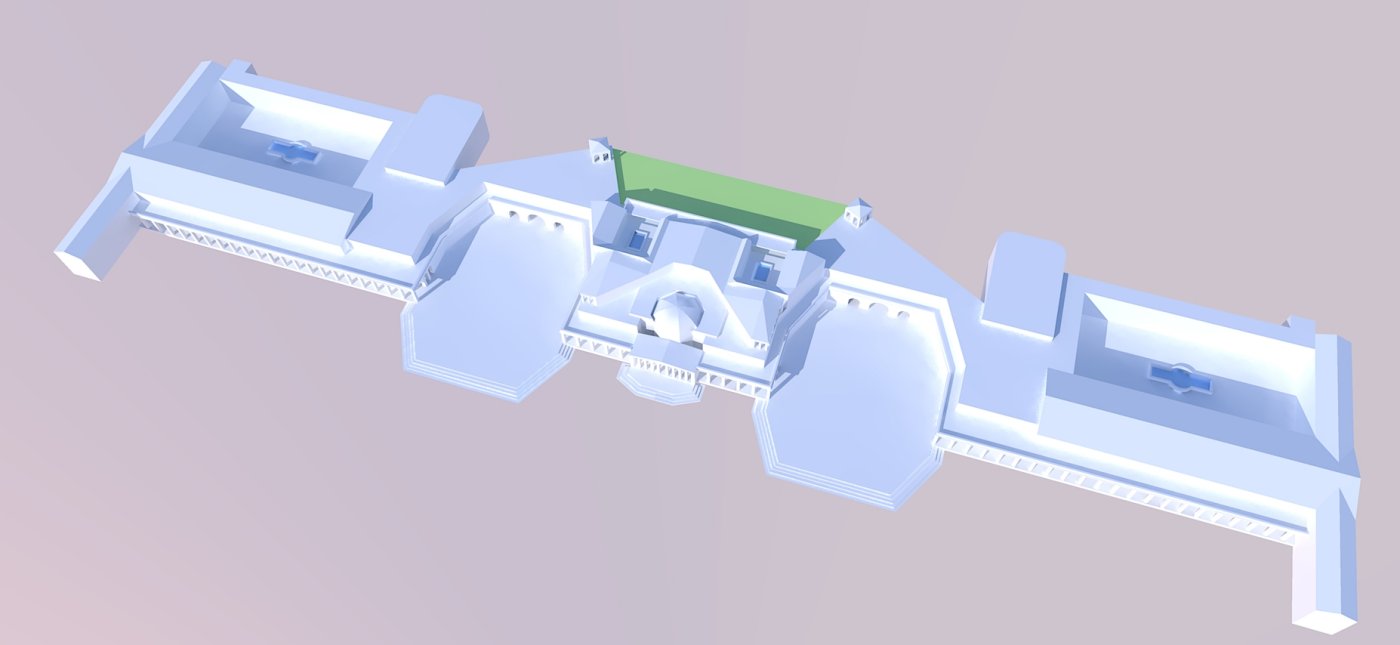
-
Some comments (only regarding modelling)
- you still use groups for the columns instead of components (where you group at all - see below)
- Many of the columns are not even groups - anything that is repetitive should be made components
- What's worse, the above groups are not even copies of the same group definition (which would allow quick transformation into components) but made independently.
- The whole structure seems to be perfectly symmetrical. In this case you could make one half into a component and only model that and mirror the whole half onto the other side.
- I can still see some back faces but of course they can easily be fixed with Tomasz' plugin
- If you used components, Kerkythea could (I think) handle them as "instances" which would allow faster rendering, too. Not a big deal at the moment but with more complex geometry, the difference could already be noticeable
Nice model however.
-
Thanks, Csaba.
I've been using the plug ins for backfaces and mirroring that you gave me, and they are very useful. Of course I built only half and then mirrored. I am still trying to figure out exactly how components and groups work, I promise I'll take my time and go through the tutorials again ... -
Here is a more than an hour presentation about groups and components (SketchUp 3D BaseCamp video from 2008). I would suggest it not even to "newbies" but everyone.
YouTube - Hooray for Groups and Components
[flash=640,380:m3diuzzb]http://www.youtube.com/v/Au5VhCoLVE8?fs=1&hl=hu_HU[/flash:m3diuzzb] -
Thanks, I'll look at it. Here goes a version with components, at least for the front columns ...
-
Yes, much better.
As for progressing, I would even group elements together (like the walls, roof etc. of one particular building etc.) With such models growing, this can help with organising/managing the whole model.
-
Marco, you can also try and place some simple textures on your model, rather than an all white look, it makes it easier to understand what are walls roofs or floors, and with the correct texturing even some very simple models can look deceivingly complex.
Are you going to include the Neronian structures of the Domus Aurea on the Palatine Hill, like the recently found rotating room mentioned by Suetonius? Is this structure aligned with the center of the Atrium later the temple of Venus and Rome?
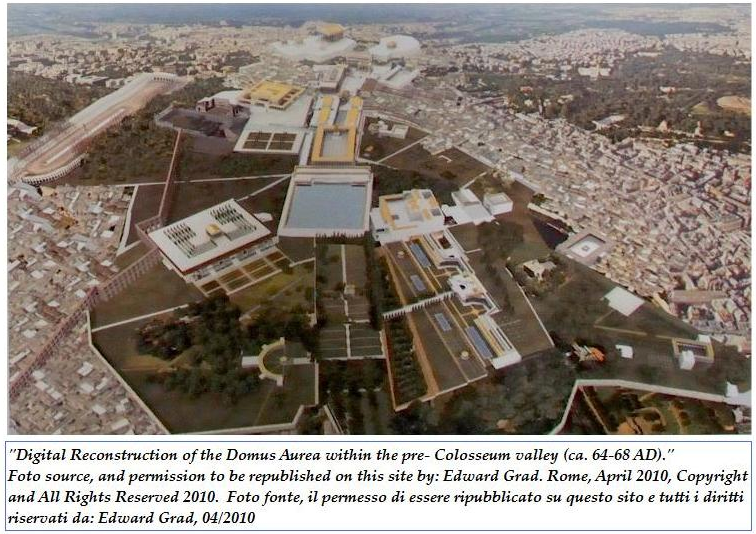
-
Hi Pedro,
Long time no see (or have you been just lurking lately?)
-
Hi, the image you post is from two bright young fellows, coordinated by prof. Viscogliosi, with whom we did some things a couple of years ago. They are good with interiors, and did a great job with the Claudianus, but the general view is not up to standard. The acqueduct jutting from the Domus Aurea is out of place, for instance.
We are trying to get our hands on the plans of the round room, I don't have them yet. As for textures, I am thinking about that, but what I have in mind is mainly the sequence, the evolution of the area through time: one scene with the situation before the fire of 64 aD, second scene Nero, third scene Flavians and so on, so that you can see how things change through time. And I think that with a dinamic vision like that a neutral color works better, not sure though ... -
Hi Elysium,
I visited Monumental Heart of Rome and I am impressed. Could have spared some work had I seen it before. Are you going on with it? Are you an archeologist too? And where from? -
Been working on the flavian situation of the Vigna Barberini. It has been much more messy than I thought. Working on two different axes is hell ...
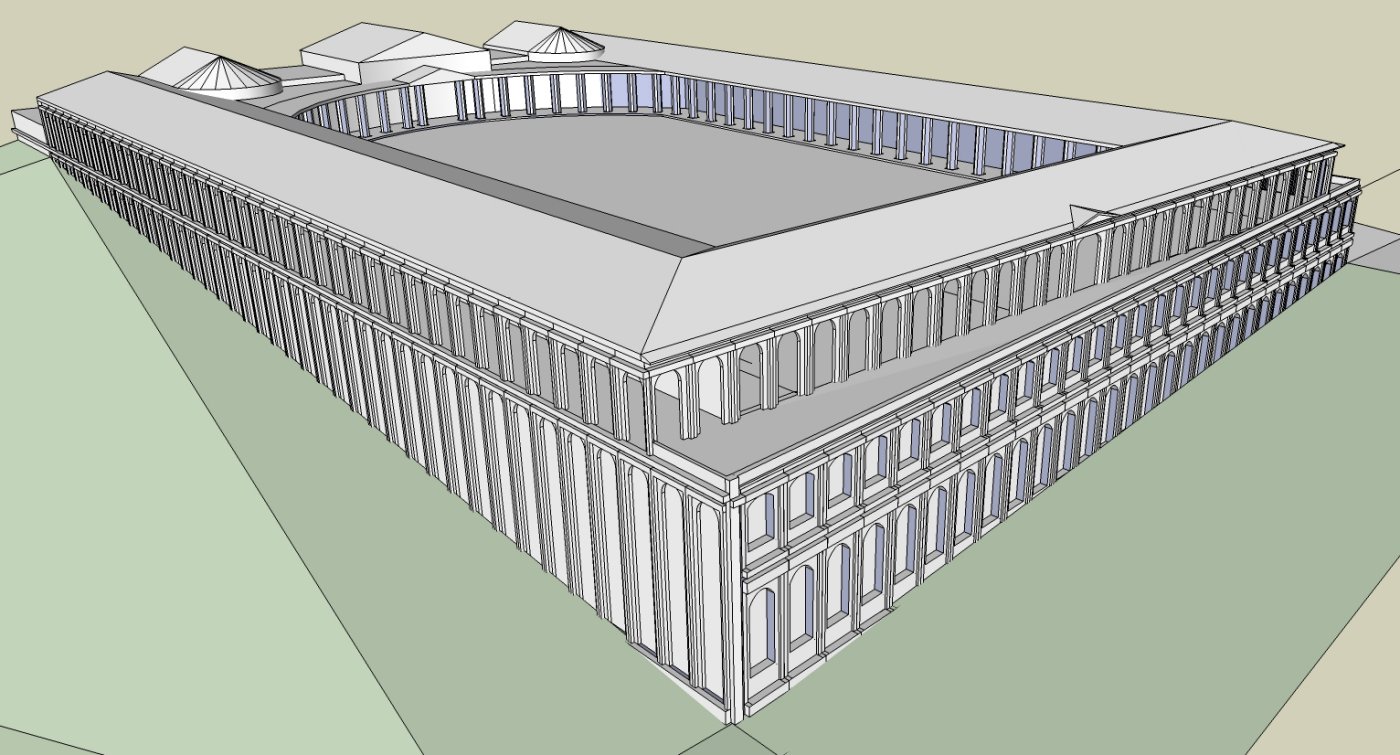
-
Csaba,
Thanks for posting that video. Don't think I've spent a more educational hour plus on SU than with that video.As an amateur enthusiast of Roman History, I've really enjoyed this whole thread and hope that it continues on. In my reading of Roman History, as well as historical fiction on the subject, I've always been amazed at the amount of razing of old buildings and replacement of them with new stuff. I guess the rubble of the razed stuff would tend to change the lay of the land, so to speak.
-
Hi Sawduster,
I'll try to go on with the thread, and thanks to Csaba's advice I am getting a bit more comfortable with SU.
Don't think the romans where that whimsy. Their keyword was "renovatio", renewal. For an emperor, or any other important person, the renovation of a building of the past was much more important than building a new one. It connected him to a great name of the past, gave him status. So even if the old building was a shack, and the new one a marble palace, he would still claim he had renovated the old historical building. Buildings lasted centuries, with minor changes. The period from 64 aD and 80 aD was the great exception. In 64 the fire destroyed most of Rome. Nero rebuilt it anew, with new urban planning rules. With the rubble from the fire he elevated the ground in what is now the Coliseum square for about 4,5 meters, and created a lake at the center with its bottom at about the previous ground level. Then the Flavians came and tried to erase the memory of Nero, built the Coliseum and the rest. But even the Flavians kept most of Nero's architectures, renaming them and changing them here and there. And again what they built lasted for centuries, a lot of it is still there. -
This was the first Meta Sudans, the fountain that was destroyed by the fire of aD 64, about 6 meters below present floor level. A good amount of it was found during the excavations. The small templet at its side is a compitum. Only the base was found, so its elevation is a matter of speculation
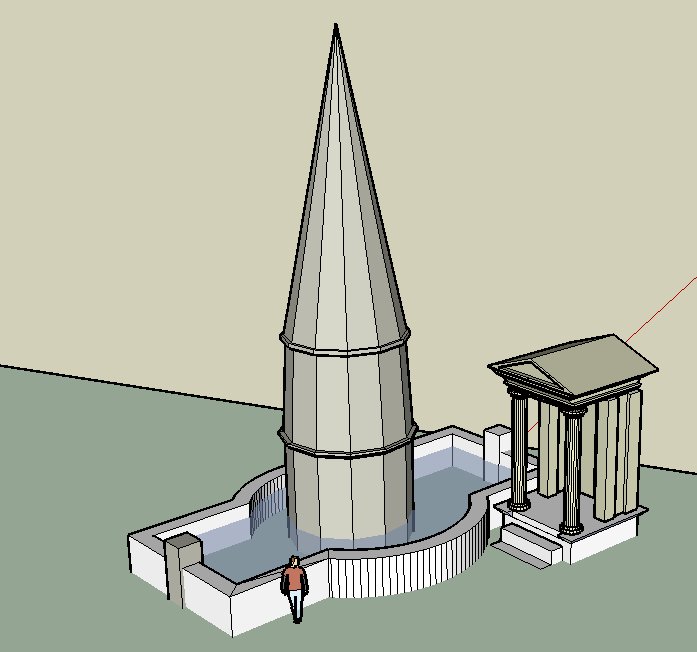
-
Tried my hand at Trajan's termae. Not quite satisfactory, but for the time being that's it.
The problem I am facing is that, after speaking with a german researcher, he convinced me that what I posted as the Oppio wing of the Domus Aurea, is just the basis villae, and that the main building was on top and back, having being completely razed by Trajan when he built his termae. So I'll have to try my hand at a work of pure imagination, since practically no evidence exists of what this main building looked like ...
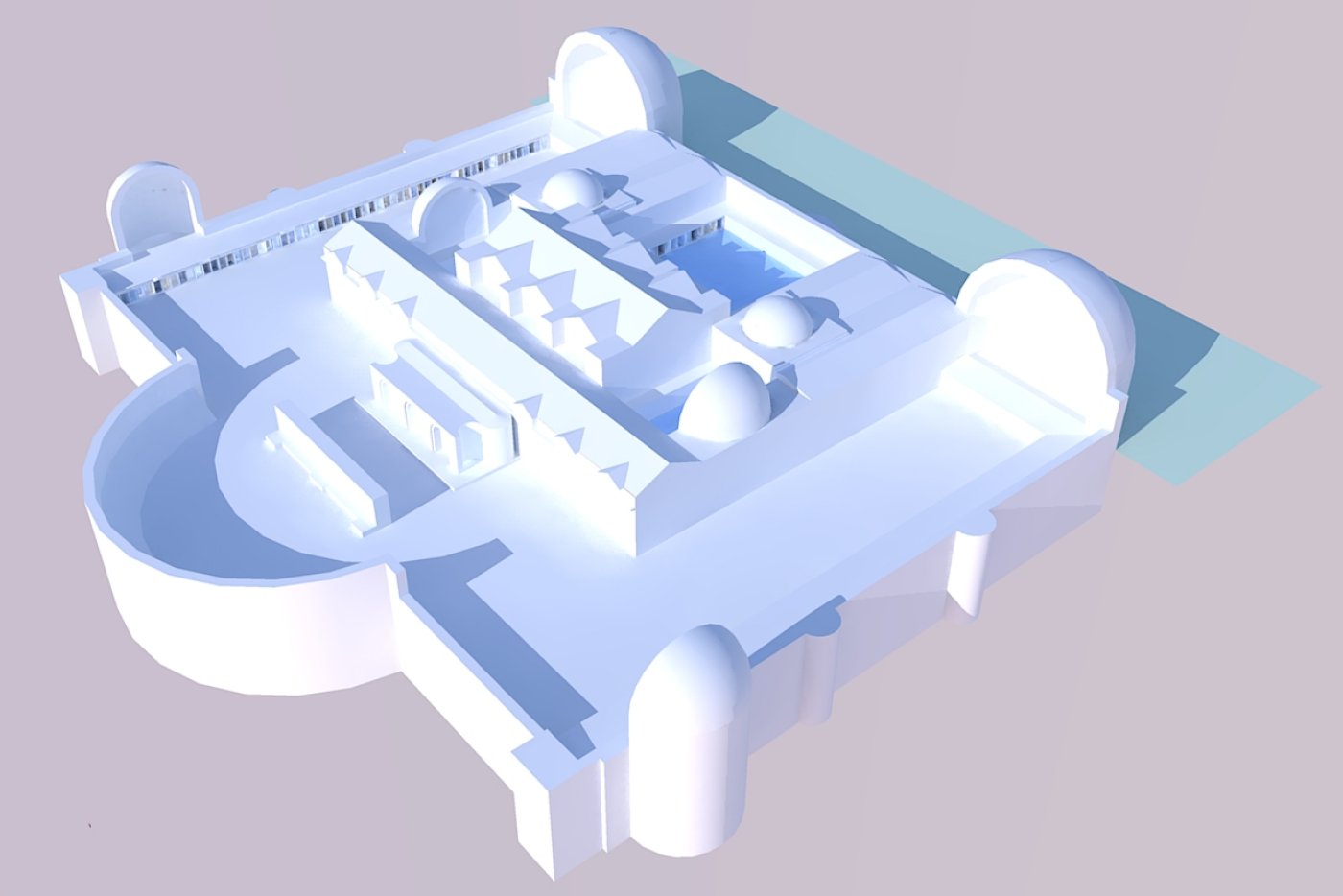
Advertisement







